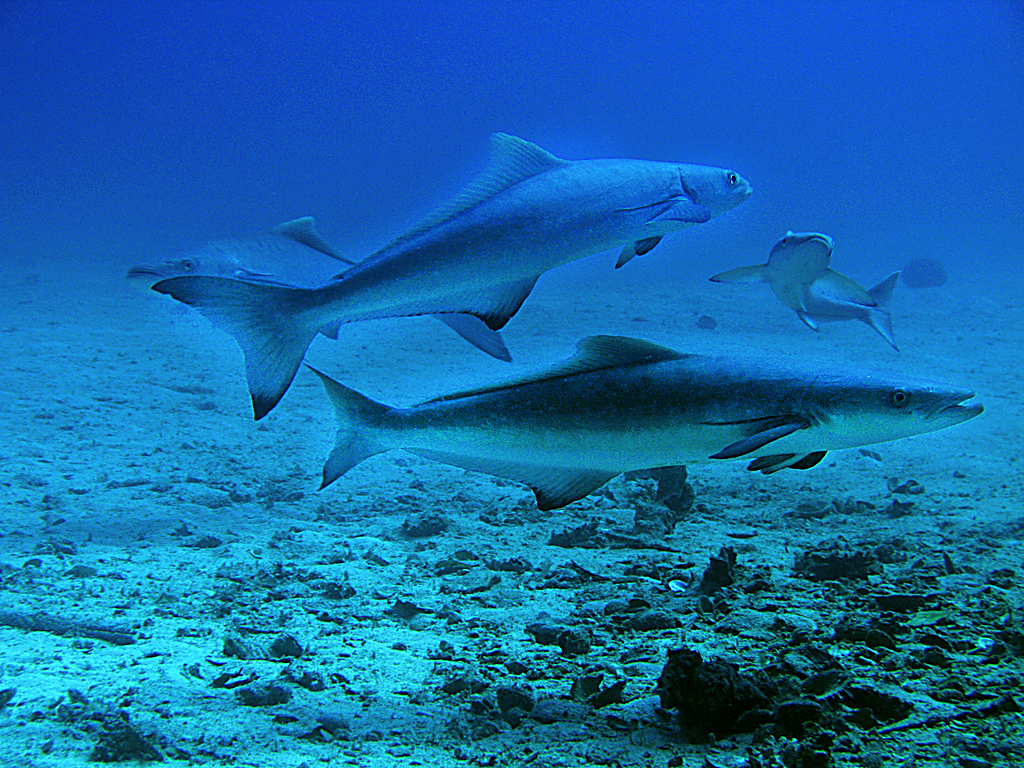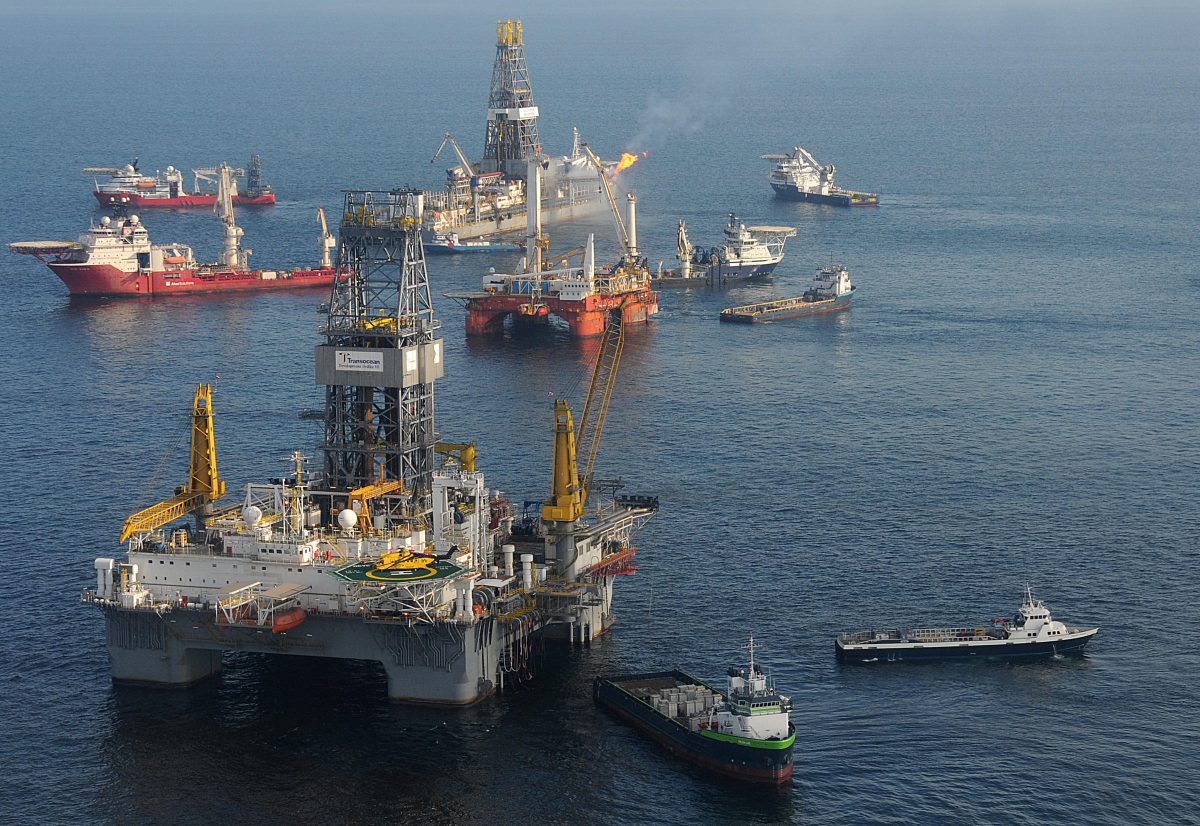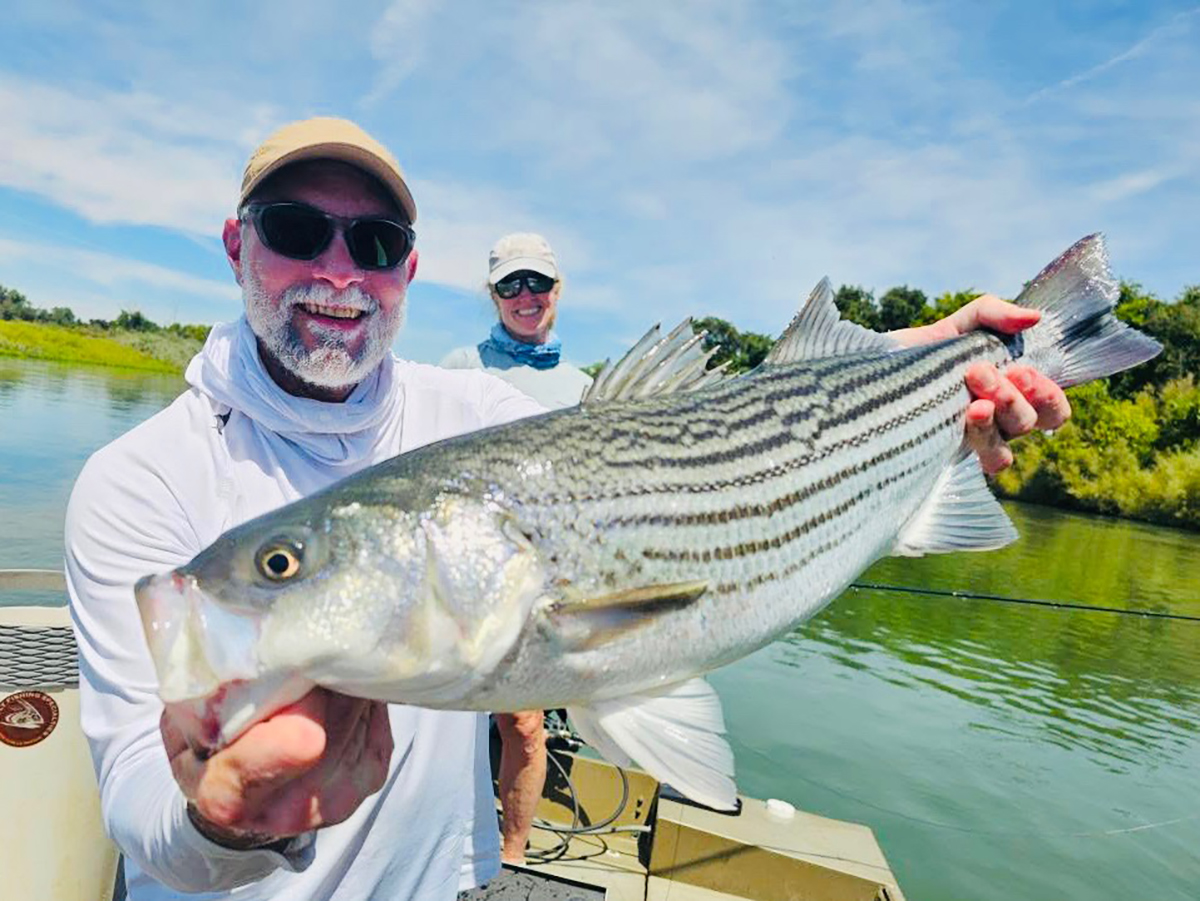
Cobia is one strange looking fish.
In some ways they look like a shark. In other ways, they resemble a hitchhiking upside-down parasite taking a free ride on the bottom of a shark, the remora. This species hangs around the Chesapeake Bay during summer months and migrates south, off the coast of North Carolina, during the fall to make for some fun fishing with some pretty large fish.
Supporter Spotlight
Cobia are known by many names around the world including ling, sergeant fish, lemonfish and crab eater. In North Carolina waters they are often referred to as ling or crab eater.
This species has a long, torpedo-shaped body with a lengthy, depressed head. Their eyes are small in relationship to the size of their bodies, and the snout, or nose, is broad. Their lower jaw sticks out farther than the upper jaw.
“Cobias have a horizontal stripe from the tail through their eye. Their coloration is typically dark brown in color, but is variable depending upon what part of the world they live in. They also have blotches of orange, bronze and green,” said Anne Markwith, fisheries biologist with the North Carolina Division of Marine Fisheries.
This fish is often mistaken for a shark or a shark sucker because of the shape and size of their bodies.
Cobia are known to live up to 10 years and reach a length of 6 feet and weight more than 100 pounds.
Supporter Spotlight
“North Carolina is home to both the state and world record cobia that was caught on June 11, 2006, off the Outer Banks that weighed 116.5 pounds. The catch has been accepted by the International Game Fish Association as a World Record in the 80-pound line class,” she said.
This fish is an open ocean, or pelagic, animal that typically swims alone, except when spawning. They are found off the United States from Maine south and throughout the Gulf of Mexico in both inshore and nearshore waters of the inlets and bays.
“Cobia usually reach sexual maturity by 3 years of age — generally 2.5 feet long, fork length — with males maturing earlier than females. Females grow to be larger than males and may reach 6 feet and weigh up to 100 pounds,” said Markwith.
On the Atlantic coast, cobia move into nearshore waters when water temperatures reach between 68-77 degrees Fahrenheit. While gathering in larger numbers inshore, they spawn over a period of four to six weeks.
“Spawning is specific to their location, with at least two genetically distinct spawning populations living within the Atlantic stock, one in Virginia and the other in South Carolina. The timing of local spawning will move up the coast as temperatures begin to warm, with peak spawning in May for South Carolina, June for North Carolina and July for Virginia,” she said.

“Females will reach maturity, and able to spawn when they reach about 3 years of age. Cobias grow quickly during their first two years of life,” Markwith said.
Cobia are batch spawners, meaning a female may spawn several times, about every four to six days during the spawning season.
“Cobia will migrate depending upon the season and will spend the winter months in the south or offshore and moving north and inshore during the summer. They are drawn to solid structure such as shipwrecks and reefs to feed and find shelter from predators,” she said.
The North Carolina Division of Marine Fisheries is using satellite tags on cobia to track where and how they migrate and learn more about the general biology of this species while off the North Carolina coast.
Adults and young cobia are usually found around natural and human-made structures including mangrove roots, reefs, buoys, shipwrecks, shelves, as well as flotsam and seaweed mats.
“Cobias are opportunistic feeders that will prey upon some species of fish, including eel and mackerel, but most of their diet is made up of crustaceans, including shrimp, and crabs,” said Markwith.
“These fish are sought after by recreational fishermen, and cobia supports recreational fisheries throughout the South Atlantic and into the mid-Atlantic region. The main way anglers will catch this fish include bottom fishing with natural bait and sight-casting, which has gained popularity recently,” said Chris Batsavage, fisheries biologist, and special assistant for councils, North Carolina Division of Marine Fisheries.
The annual recreational catch of Atlantic cobia has increased since the 1980s, with increases to numbers of fish recreationally harvested and those caught and released.
“In 2018, recreational anglers landed an estimated 113,939 cobia and released 367,129 individual cobia. Recreational harvest is managed by enforcing a one-fish-per-person bag limit, 36-inch fork-length minimum size limit and state-specific seasons and vessel limits,” he said.
The commercial fishery is a lot smaller, only landing 50,314 pounds in 2018. Mostly the commercial fishery is a bycatch fishery. It has been associated with the snapper/grouper hook and line fishery and troll fisheries for many South Atlantic species, although more commercial fisheries that target cobia have recently developed in some areas. Cobia are also accidentally caught in ocean gillnet fisheries that target king and Spanish mackerel.
“Commercial harvests are managed through a coastwide two-fish-per-person possession limit set by the Atlantic States Marine Fisheries Commission, a six-fish vessel limit and a 33-inch fork-length minimum size limit. States from Georgia through New York are able to make additional restrictions to their individual fisheries, and some have started to use a 36-inch fork-length commercial minimum size limit, matching the recreational fishery’s limit,” said Batsavage.
The best way to catch cobia is by using sight casting with bucktails as they move along the East Coast. North Carolina is a popular fishing destination for cobia by fishermen who fish along the bottom with bait. You can also catch cobia while trolling for king mackerel, and keeping your bait close to the bottom with cut, or live bait near reefs, inlets and shipwrecks.
Frequently, fishermen will see cobias hanging around a navigation aid or inlet buoy. Another fun way to catch cobias is by using a fly rod and reel.
“Under North Carolina Division of Marine Fisheries Proclamation FF-15-2020, it is illegal to possess a cobia less than 36 inches fork length and to possess more than one cobia per person per day,” Batsavage said.
The recreational fishing season for cobia under this proclamation runs from May 1 through Dec. 31, while the commercial season opened on Jan. 1 and remains open until the quota is caught.
“Private vessels have a different set of regulations to follow. From May 1-May 31, 2020, it is illegal to possess more than two cobias per vessel per day, or one cobia per person per day, if there is only one person onboard,” he said.
From June 1 through Dec. 31, it is illegal to possess more than one cobia per vessel per day, period.
For-hire vessels follow the same fishing season from May 1 through Dec. 31, but are limited to not more than four cobias per vessel per day, or one cobia per person per day, if fewer than four people are onboard.
“Fishing commercially for cobia brings with it a third set of rules that must be followed, said Batsavage.
In this case it is against the law to possess cobia that are less that 36 inches fork length. Commercial fishers cannot have in their possession more than two cobias per person per day, or six per vessel per day, whichever is more restrictive in a commercial operation, Batsavage said.







